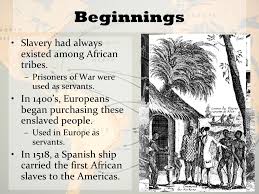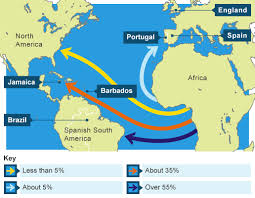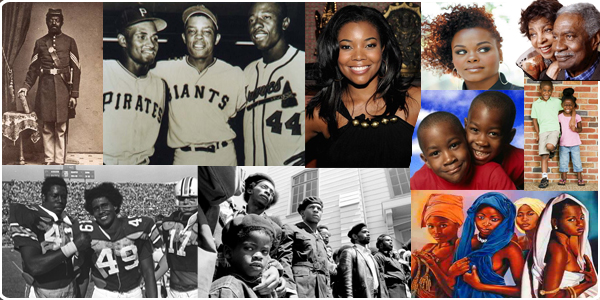Slavery in Spain can be traced to the times of the Greeks, Phoenicians and Romans. In the 9th century the Muslim Moorish rulers and local Jewish merchants traded in Spanish and Eastern European Christian slaves. Christian Spain began to trade slaves in the 15th century and this trade reached its peak in the 16th century. The history of Spanish slavery began with Portuguese captains Antão Gonçalves and Nuno Tristão in 1441. The first large group of African slaves, made up of 235 slaves, came with Lançarote de Freitas three years later.[6] In 1462, Portuguese slave traders began to operate in Seville, Spain. During the 1470s, Spanish merchants began to trade large numbers of slaves. Slaves were auctioned at market at a Cathedral, and subsequently were transported to cities all over Imperial Spain. This led to the spread of Moorish, African, and Christian slavery in Spain.

By the 16th century, 7.4 percent of the population in Seville, Spain were slaves. Many historians have concluded that Renaissance and early-modern Spain had the highest amount of African slaves in Europe.[7]
After the discovery of the New World, the Spanish colonialists decided to use it for commercial production and mining because of the absence of trading networks.[8] The native Indian population was used for this labor but they died in large numbers as a result of war, diseases, exploitation and social disruptions.[8] Meanwhile, the need for labor expanded, such as for the production of sugarcane.[8] The problem of the justness of Indian slavery was a key issue for the Spanish Crown.Bartolomé de las Casas was concerned about the fate of the natives and argued in 1516 that white and black slaves should be imported to the Indies to replace the Amerindians.[8] African slaves did have certain advantages over native slaves as being resistant to European diseases and more familiarity with agricultural techniques.[8] This preference led to the development of the Atlantic Slave Trade.[8] It was Charles V who gave a definite answer to this complicated and delicate matter. To that end, on November 25, 1542, the Emperor abolished the enslavement of natives by decree in his Leyes Nuevas New Laws. This bill was based on the arguments given by the best Spanish theologists and jurists who were unanimous in the condemnation of such slavery as unjust; they declared it illegitimate and outlawed it from America—not just the slavery of Spaniards over Indians—but also the type of slavery practiced among the Indians themselves[9] The labor system of Encomienda was also abolished in 1550.[8] However these laws did not end the practice of slavery or forced labor immediately and a new system of forced native Indian labor began to be used repartimiento and mita in Peru. Eventually this system too was abolished due to abuses.[8] By the 17th century, forced native Indian labor continued illegally and black slave labor legally
End of Wikipedia extract.

The Portugese and Spanish occupied and traded in slaves in Africa as early as 1495 according to Igbo tribesmen in Africa. Slavery was used world wide for many years to define wealth.
The Spanish also occupied parts of America and Jamaica. When the Spanish went to war with England they released their slaves in Jamaica. The chief of Maroon Town in Jamaica confirms that the tale of this has been passed down to them from generation to generation. Dr Gates Junior in his documentary many rivers to cross explores this time. Dr Gates Junior discovers that the Spanish declared that all runaway slaves would be welcome and safe in Spain for political reason during their war with England.
Wiki – Slavery in the Spanish New World colonies
The enslavement of Africans in the Spanish Americas began in 1502 and was finally outlawed in 1716 in all colonies with the exceptions of Cuba and Puerto Rico, where it remained in a semi-legal state until it was finally abolished 1866 and 1863 respectively. Native slavery was prohibited during the first half of the sixteenth century, although some enslavement continued under the guise of just war. Most of the earliest black immigrants to the Americas were born in Spain and were not slaves, men such as Pedro Alonso Niño, a navigator who accompanied Christopher Columbus on his first voyage, and the black colonists who helped Nicolás de Ovando form the first Spanish settlement on Hispaniola in 1502. The name of Nuflo de Olano appears in the records as that of a black slave present when Vasco Núñez de Balboa sighted the Pacific Ocean in 1513. Other blacks served with Hernán Cortés when he conquered Mexico and with Francisco Pizarro when he marched into Peru.
Estevanico, one of the survivors of the unfortunate Narváez expedition from 1527 to 1536, was a black slave. With three other survivors, he spent six years traveling overland from Texas to Sinaloa and finally Mexico City, learning several Native American languages in the process. Later, while exploring what is now New Mexico for The Seven Cities of Gold, he lost his life in a dispute with the Zuñi. Juan Valiente, another black person, led Spaniards in a series of battles against the Araucanian people of Chile between 1540 and 1546. He was rewarded with an estate near Santiago and control of several Native American villages. José de Rodríguez was another prominent Black Spaniard who served as a buccaneer during the 17th century in the Caribbean waters at Spain’s service. He was known for his brutality against British and Dutch prisoners.
In 1502 the Spanish monarchs, Ferdinand and Isabella, granted permission to the colonists of the Caribbean to import African slaves. Opponents of their enslavement cited their weak Christian faith and their penchant for escaping to the mountains. Proponents declared that the rapid diminution of the Native American population required a consistent supply of reliable work hands, since the Spanish population at the time was far too low to carry out all the manual labour needed to assure the economic viability of the colonies as the first years of Spaniard presence in America were marked by a terrible outbreak of a tropical epidemic flu in the Caribbean that decimated the populations of local natives and Spaniard explorers. In 1518 the first shipment of African-born slaves was sent to the West Indies. The Spaniards, although purchasers of slaves, mostly from the Portuguese and the British, did not engage on slave trade on the African coast themselves, and the number of African slaves in their colonies was sensibly inferior to those of Portuguese or British.
End of extract
Native to Jamaica
The earliest recorded inhabitants of Jamaica were the Taíno Indians, also known as the Arawaks. This tribe originated along the northern coast of South America, including what is now Venezuela. Historians believe that these Indians came up through the Antilles and into Jamaica in two different waves. The first wave of inhabitants is known as the “redware people,”who probably arrived around 650 AD. The second wave arrived between 850 and 900 AD.
The Taíno encountered a race known as the Ciboney, or “rock-dwellers,” on many of the Caribbean islands. It’s unclear whether or not the Ciboneys were present on Jamaica, but they did live on both Cuba and Hispaniola, the closest islands to Jamaica. However, we do know that the lives of the Taíno tribes on Jamaica were interrupted by a new tribe known as the Caribs.
The Carib Indians were warlike, and gained the name “Carib” from the Spanish word for cannibal. The Caribs came to the islands of the Caribbean in much the same way that the Taínos did: from South America via canoe. They became well-known and feared throughout the region, and made occasional attacks against Jamaica. Some historians think the Caribs may have exterminated Jamaica’s Taíno residents had the Spanish not arrived on the island.

